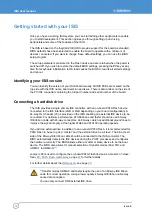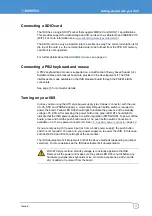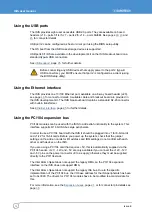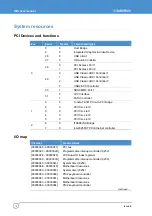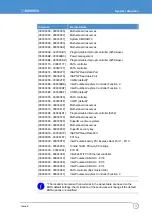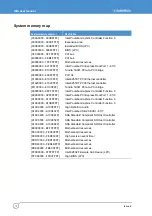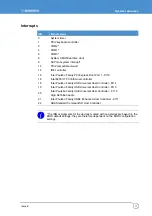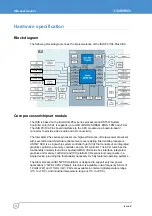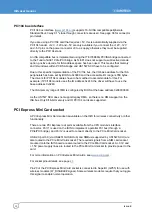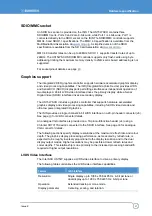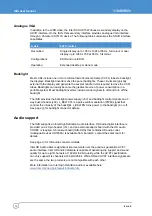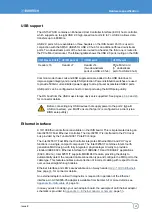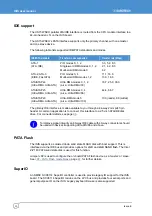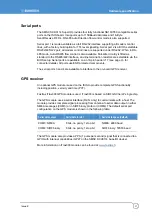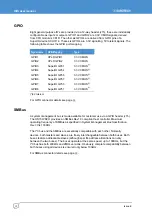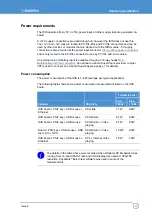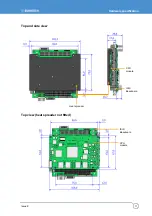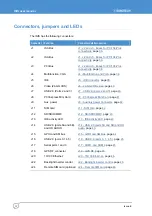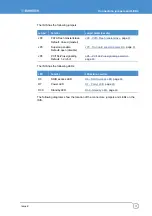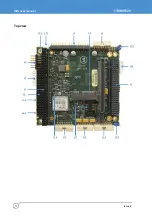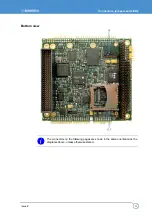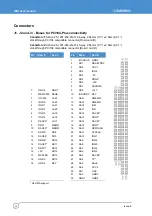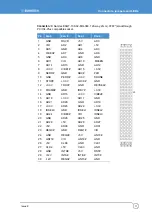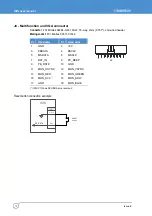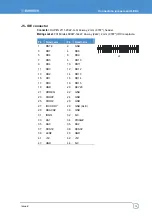
ISIS user manual
Issue E
24
Analogue VGA
In addition to the LVDS video, the Intel SCH US15W drives a secondary display on the
SDVO interface. On the ISIS, this secondary interface provides analogue VGA interface
through a Chrontel CH7317A device. The following table summarises the SDVO interface
capabilities.
Feature
SDVO Interface
Resolution
Single display up to 1280 x 1024 at 85 Hz, full colour or dual
display up to 1280 x 768 at 85 Hz, full colour.
Configurations
EDID and non-EDID.
Operation
Extended desktop or clone mode.
Backlight
Most LCDs include one or more cold-cathode fluorescent lamp (CCFL) tubes to backlight
the displays. Backlight inverters drive the panel backlights. These circuits are typically
external to the display and generate the several hundred volts required to drive the CCFL
tubes. Backlights can easily become the greatest source of power consumption in a
portable system. Most backlight inverters include control signals to dim and turn off the
backlight.
The ISIS provides the backlight power supply (+5V) and backlight control signals on a 7-
way boxed header (J22). L_BKLTCTL is a pulse width modulation (PWM) signal that
controls the intensity of the backlight. L_BKLTEN turns power to the backlight on or off.
See page
for backlight connector details.
Audio support
The ISIS supports an Intel High Definition Audio interface. HD Audio digital interface is
provided on a 20-pin header (J14), and an external adaptor board with the HD audio
CODEC is required. A breakout board (ISIS-HDA) that contains HD audio codec
(Analogue Devices AD1986A) is available from Eurotech, contact the sales team for
details.
See page
for HD audio connector details.
Intel HD Audio delivers significant improvements over the previous generation AC‘97
audio interface. Intel HD Audio hardware is capable of delivering the support and sound
quality for up to eight channels at 192 kHz/32-bit quality, while the AC‘97 specification
can only support six channels at 48 kHz/20-bit. While HD and AC’97 interface signal sets
are the same, the two protocols are not compatible with each other.

